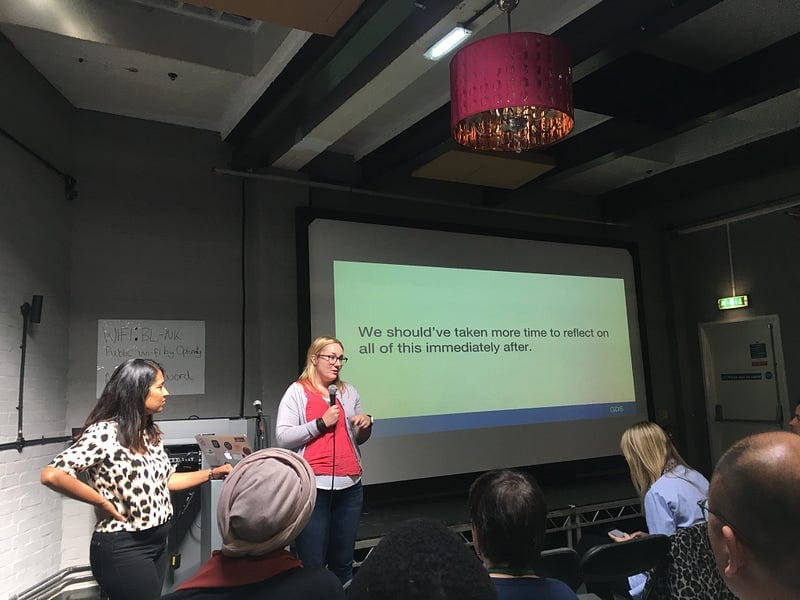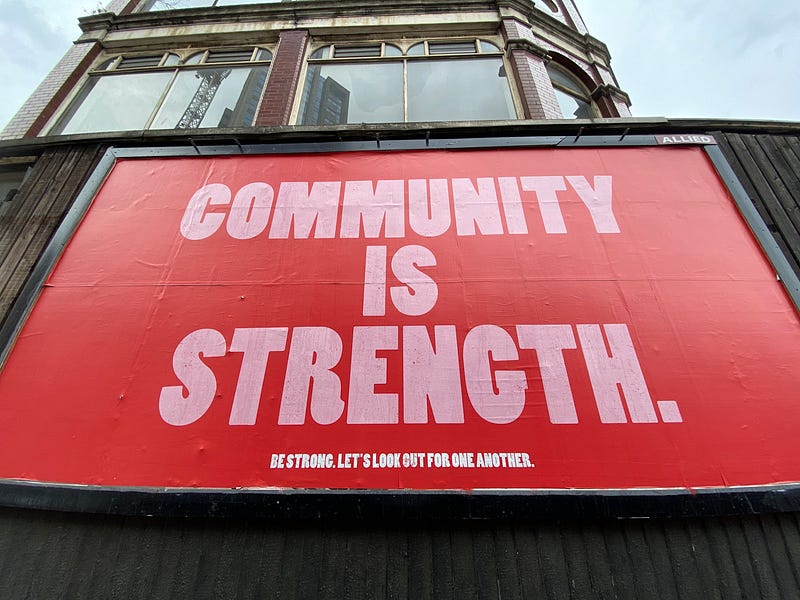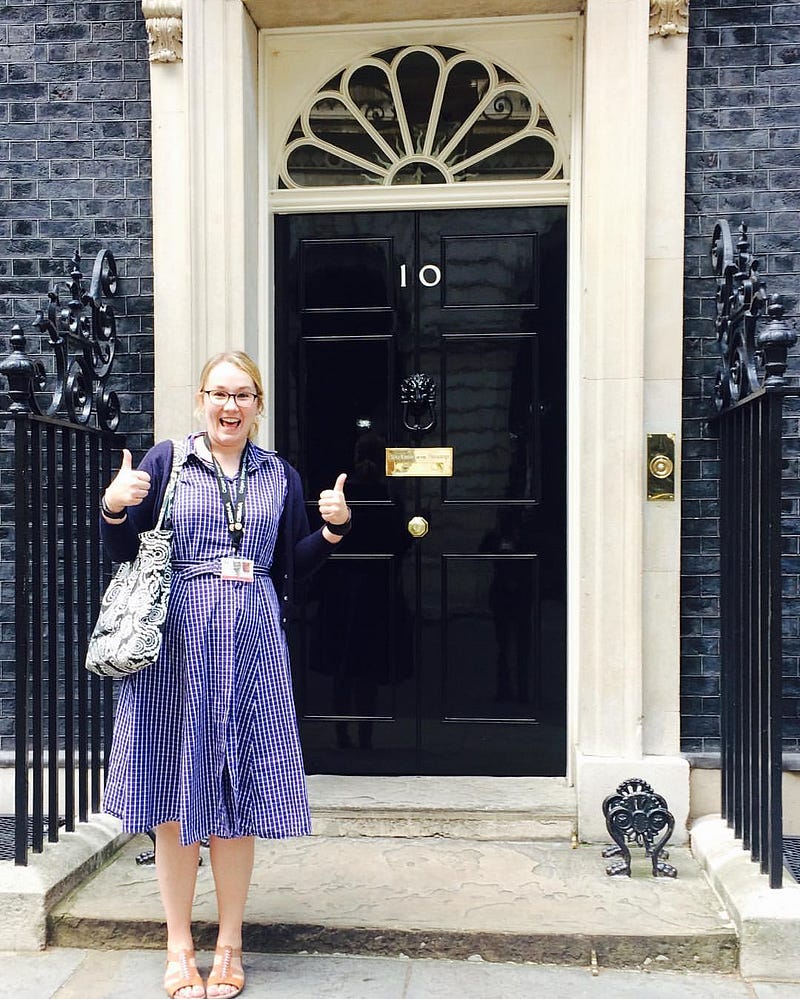The power of cross-government communities
How human-centred design communities have changed my career, and also my life

A community of practice is loosely defined as a group who have a common interests, coming together to achieve collective and individual goals. Many organizations have them in some capacity: some are life changing and some are just another meeting invite. I’ve experienced both.
I want to tell you about how cross-government communities have impacted me, but first I’ll give you a bit of background on my career path.

Starting out as a UX team of one
I got my start in government in 2010 at the City of Calgary when I was hired as a content consultant to help with the Calgary.ca website redesign. I was working with departments like Parks and Bylaw to help them re-write and re-organize their content.
Writing has always come easy for me. But the harder part of the job was convincing people who had decades of experience in government that my content approach was better than what they already had. I also had to ask myself: who am I to make this decision? How do I know it’s better?
So I started learning and implementing user research and usability methods as a way to validate what the work I was doing. This is how I got my start in Human Centred Design — by running usability studies, card sorts and eye tracking studies on the websites I was working on and eventually expanding on them with deeper qualitative research. At the time, I’m fairly certain I was the first and only person in my department using this approach, and people started to see me as some sort of UX expert. But I felt like a fraud — I had zero experience this, and I felt like I was making it up as I went. I had books and blogs to learn from, but what I really felt I needed was a mentor or even an experienced buddy: Someone who had done this to give me feedback, challenge me, tell me if I’m doing it right and how I can do better.
Discovering the UK government x-gov communities
A few years later, I moved to the UK to study design and ended up working in a government department called the Cabinet Office, for their Digital and Technology Team. The team there was very small, and again I was a UX team of one when I started. But my experience was really different.

The Government Digital Service is a central department in the UK government that has invested a lot of money, effort and time into building digital capacity across all levels and departments of government. They’ve worked hard to provide high quality training and guidance, and during my time there they also had a fantastic UCD Community team (Kara Kane, Clara Greo and others) that was dedicated to building user centred capability and culture across government, supporting several thriving communities and showing what good user centred design practice looks like.
As soon as I joined government, I signed up for a really helpful 2-day user research training course led by John Waterworth, and joined the cross-gov communities for research, content and design. I immediately started to connect with some of the skilled researchers at GDS and was so grateful when a few of them offered me the chance to shadow them for a few days (one of those researchers, Lorna Wall, would eventually become my manager.)
I attended as many community events as I could and participated in discussions on mailing lists and in slack channels. I remember asking for advice on a particularly complex content problem I was having, and having one of the senior content designers at GDS graciously offer to walk me through it. People in the community were so generous with their time and their wisdom. Being part of these groups, and having access to this kind of support and mentorship, was transformative for me — I learned so much and began to feel confidence in my work.
Eventually I joined GDS, where I worked directly with and for talented researcher and designers who could guide and coach and support me through the challenges of the work. Because I was surrounded with expertise, I didn’t need to rely on communities as much as before. But I also knew that I wouldn’t be there without them, so I started to get involved: I volunteered for events like Sprint 18 and the International Design In Government conference. I started speaking at events, writing blog posts, and helping to coach and mentor people who are new to Human Centred Design and Research. It’s through these events that I made connections which led to me joining the Canadian Digital Service in 2019, and eventually the BCDevExchange where I work now.
There’s a reason I am telling you this
I honestly believe that I wouldn’t be here, in this stage of my career, if not for the willingness of others to build communities and to share their work openly.
Cross government communities have changed not only my career but my whole life. They’ve given me:
- Expertise and experience
- New career opportunities
- A support network
- Confidence in my work
- Inspiration to try something new
- Space to reflect and be challenged
Paying it forward in the BC Government
I want everyone to feel that they have access to the kind of support and guidance I’ve been fortunate enough to benefit from. So although I am a total introvert and group settings usually make me break out in a cold sweat, I have become passionate about bringing people together.
I recently organized a Meet & Greet event in the BC government to bring together people who practice and are interested in Human Centred Design. Around 80 people attended. We talked a bit about why communities matter, and shared what we thought the vision for the community could be:
1. Connect and support the design community in the BC government
2. Build design capacity and expertise across government
3. Increase awareness and understanding of Human Centred Design in non-design roles/teams
4. Share work, to both inspire and get feedback
5. Influence change across the organization through better design of public services
Did we miss anything? I’m always open to feedback.
How might we … run an effective community, when our time and focus is limited by the demands of our day jobs?
We’re a small team of organizers, and this is a side hustle amidst a lot of competing priorities, so I know that it’s not going to be easy to create a thriving community off the side of our desks. I believe these things will help:
- Work in the open by default, so many can benefit from the lessons we are learning. We hope to do this by through blogging and also running open events (ideally one open event per quarter)
- Keep up momentum — this in turn means keeping what we do fairly lean and low effort because if it becomes too much work, we won’t be able to do it
- Be intentionally and purposefully welcoming and inclusive to all. We should always be asking ourselves about who is not in the room, checking our blindspots and being honest in our reflections about what is not working for the people in our community (and why that is)
- Use co-design to share power and make collective decisions about the community. It’s important that this is not steered by any one person or ministry or business area
I’ll be honest, I have no idea if it’s possible to build the community we want with the limited time and focus we have. But I think it’s worth a try. If you have any thoughts or concerns or suggestions, we’re always open to them, in the comments below, on twitter, or by email.
We all have a role to play in cross-government communities
As GDS says, “ Communities exist and flourish because of community members — people get involved in communities related to their profession, skills and learning interests.”
So the thing that all cross-government communities need is you. We need you to start and contribute to discussions. We need you to work in the open and share that work, so people can see, be inspired by and learn from what you’ve done. We need you to offer to help someone, to open your hearts and calendars to people in need of wisdom, feedback and guidance.
We also need our leaders to recognize the importance of communities and capacity building, and to prioritize these things so we don’t have to do this off the side of our desks. GDS has set an excellent example for the rest of the world, and there’s no reason why we can’t follow their lead.
We can do this, but it’s up to each of us.
Resources for Canadian public servants looking to join a community
If you‘re a public servant in Canada and you feel like you don’t have a community, there are a few places to look — get in touch if you know of any others:
- If you’re interested in joining our BC Gov HCD community, you can sign up for our mailing list. Some of our events may be limited to those working in/with BC gov for practical reasons, but we plan on running as many open events as we can
- There’s a Canadian Digital Gov Connections slack workspace, as well as an International Gov Design slack that are open to all levels of gov
- OneTeamGov Canada meets weekly on Fridays and they are a really lovely and welcoming bunch
- You can join the GC UX mailing list here — they run great networking events for UXers
- Lots of great conversations happen on twitter, and the #GCDigital hashtag is a great place to start. My DMs are open if you ever want to get in touch.
- Mega Mentor is a wonderful place for people working in HCD to match with a mentor or mentee, although many of the mentors are in the UK so be prepared for the time difference.
- And, if you’d like to chat to me personally about any of this, I have regular office hours that you’re welcome to book into.
—
I can’t write this without taking some time to thank the people and organizations that have done and are doing the hard work to build and contribute to thriving, supportive communities. Thank you, I am so grateful for all that you do. Also thanks to my colleague Ari Hershberg for encouraging me to write this and giving me space in the Exchange Lab community to share.


Comments ()